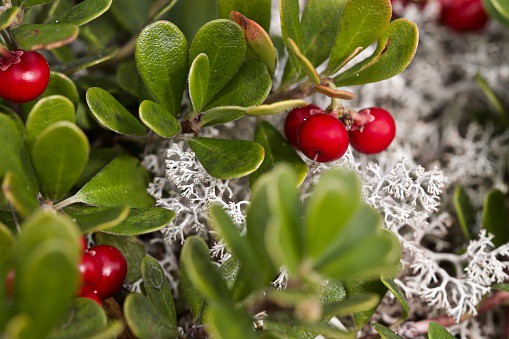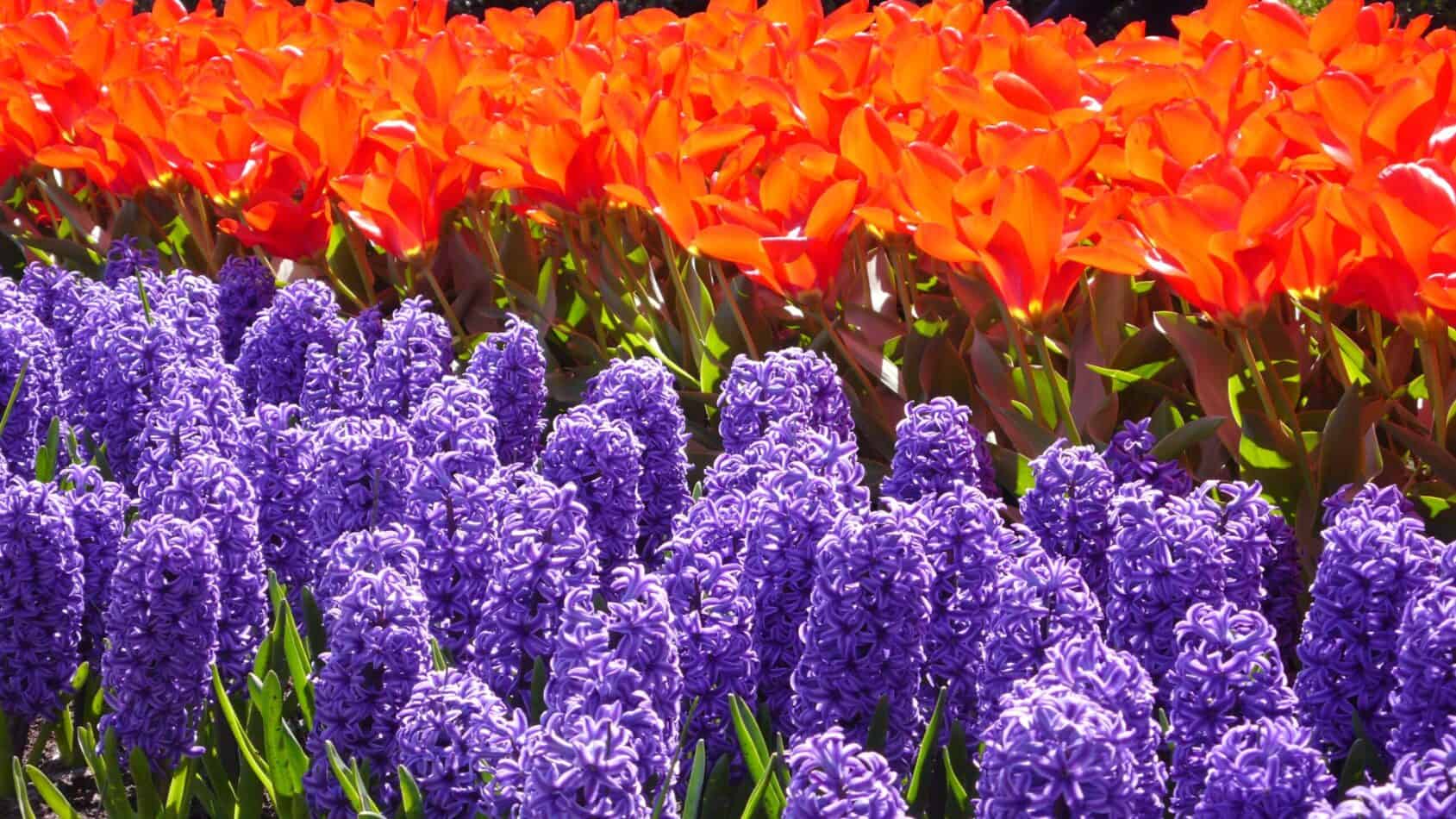Bearberry, or Arctostaphylos uva-ursi, is a slow-growing evergreen shrub that is extremely winter hardy. The red stems produce glossy green leaves that turn red to purple in the winter. In mid to late spring, it forms graceful clusters of white to pink flowers. After several weeks the blooms give way to bright red berries that provide an essential source of winter nutrients for birds and mammals, including bears. The name “Bearberry” is derived from the Latin phrase for “Bear’s food”.
Etymology
The genus name Arctostaphylos is derived from the Latin terms arctos meaning bear and staphyle meaning bunch of grapes. This is in reference to the leaves and berries of some Arctostaphylos species being eaten by bears during hibernation. The species name “uva-ursi” is derived from the Latin words “uva” meaning grape and “ursi” meaning “of a bear”.
How to Plant
Bearberry can be planted in full sun to partial shade areas of your garden or home. It is best to have an average soil and pH level, but can tolerate a wide range of soil and acidic pH levels. Bearberry likes moist soil and it is best to water deeply throughout the year. Pruning can help to maintain good shape and size.
How to Care for Bearberry
Caring for Bearberry is relatively easy, but it does require attention to certain details. It is important to ensure that the soil is evenly moistened and to use a balanced fertilizer for optimal growth. Monitor for any signs of pests or diseases, and take appropriate action if needed. It is also important to prune Bearberry during the late winter or early spring in order to maintain a healthy shape and size. Bearberry is winter-hardy, so make sure to provide some shelter or move it indoors if needed.
Meaning and Symbolism
Bearberry has had a variety of meanings and symbolism throughout history. Native American tribes considered Bearberry sacred and it was often used in medicine and ceremonial rites. In modern times, Bearberry is sometimes seen as a symbol of patience, independent spirit, and of welcoming new experiences.
History, Mythology, and Religious Significance
In Native American culture, Bearberry was considered sacred and was widely used in medicine and traditional ceremonies. In particular, the Cree and Ojibwa tribes used the plant as a diuretic, a treatment for colds, and a sterilizer of wounds. Bearberry was also an integral component of traditional storytelling and mythology. It was said that Bearberry was the tribal members’ link to the spirit world and that its shape was a symbol of fertility. Bearberry has been used in spiritual practices by a wide range of cultures, such as Scandinavians, Hindus, and Buddhists.
Flower Varieties and Their Defining Characteristics
Bearberry (Arctostaphylos uva-ursi) is a genus of evergreen shrubs, vines, and trees native to the Northern Hemisphere. The main species of Arctostaphylos is the A. uva-ursi, commonly known as the Bearberry. Other species include A. alpina, A. andersonii, A. nevadensis, A. pungens, and A. silvatica. Some of the defining characteristics of these species include their evergreen foliage, bright red berries, small white-pink flowers, and their ability to tolerate a wide range of temperatures and climates.
How to Pot and Repot
Potting Bearberry is a relatively simple process. You will need soil that is well draining and slightly acidic with a pH level between 5.6 and 7.2. You can use a standard potting soil, or you can create your own mix using equal parts of compost, sand, and loam soil. When potting Bearberry, it is important to use a pot that is large enough to give the plant room to grow, but not so large that it is difficult to move it indoors during cold temperatures. Repotting Bearberry should only be done every couple of years. When you repot, make sure to loosen the soil and remove old, decaying roots. Also, make sure the soil is evenly moistened before you repot.
How to Prune
Pruning Bearberry is an important part of its cultivation. Pruning shears should be used to remove dead, dying, or diseased branches as soon as they become visible. When pruning, always cut at a 45-degree angle to the twig. Prune during the late winter or early spring to shape the shrub and ensure optimal health. Pruning Bearberry correctly will help to promote consistent growth and promote the production of flowers and red berries.
How to Propagate
Bearberry can be propagated by seed sowing, stem cutting, and layering. To propagate Bearberry through seed, fill pots with seed-sowing compost and press seeds into the compost, making sure that each seed is covered by a very thin layer of compost. Ensure that the compost is kept moist and place in a warm area. Seeds should germinate within two to three weeks. To propagate Bearberry through stem cutting, use a sharp knife to snip off a 4 in. stem that has three to four nodes. Dip the cutting’s end in rooting hormone and place it in a potting mix. Keep the soil moist and the cutting will take root within a few weeks.
Common Pests and Diseases
Bearberry is susceptible to several common pests and diseases. Aphids, scales, and mealybugs are the most common insect pests, and can be managed by insecticidal soap or neem oil. Fungal and bacterial diseases, such as powdery mildew, blight, and root rot can be controlled by avoiding overhead watering and improving air circulation. It is important to also keep an eye out for leaf spots and yellowing foliage, which can be an indication of leaf scorch or chlorosis.
Frequently Asked Questions
Q. Does Bearberry need full sun?
A. Bearberry can tolerate full sun to partial shade, however, it will prefer the sunnier areas of your garden or home.
Q. How should I prune Bearberry?
A. Prune Bearberry during the late winter or early spring to shape the shrub and encourage flowering. Always use pruning shears and make sure to cut at a 45-degree angle.
Q. How long does it take Bearberry to propagate?
A. It usually takes two to three weeks for Bearberry to sprout from seed and a few weeks for stem cuttings to root.
Fact Sheet
| Bearberry | Arctostaphylos uva-ursi |
|---|---|
| Family | Ericaceae |
| Plant Type | Perennial evergreen |
| Mature Size | 3 ft. tall and 6 ft. wide |
| Sun Exposure | Full sun to partial shade |
| Soil Type | Well-draining, acidic soil |
| Soil pH | 5.6-7.2 |
| Bloom Time | Mid to late spring |
| Flower Color | White to pink |
| Hardiness Zones | 3-7 |
| Native Area | Northern Hemisphere |
What we love from Amazon this week
Buy these wonderful flowers directly from Amazon:















